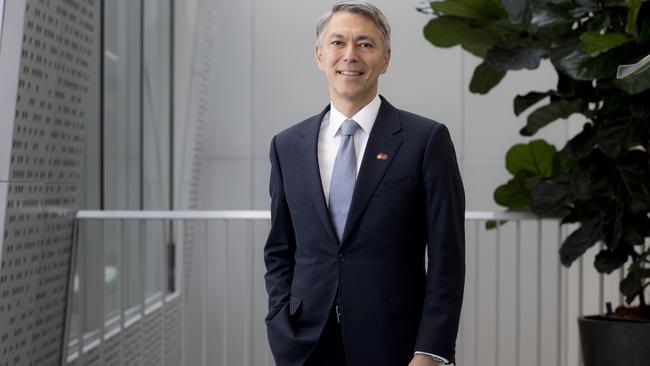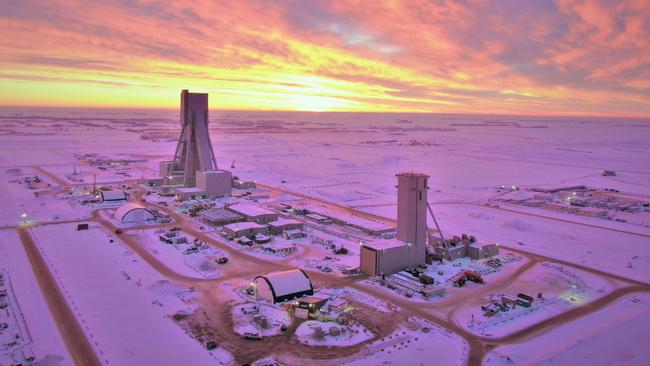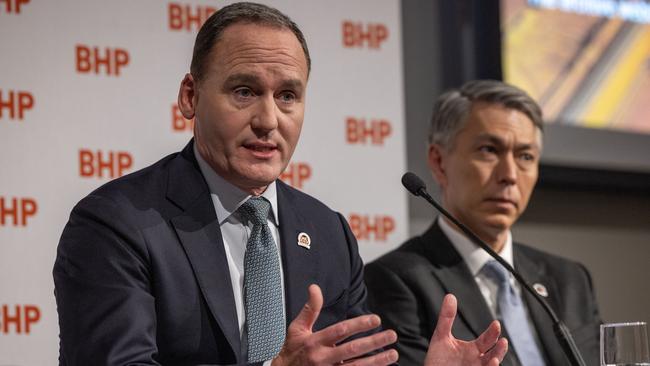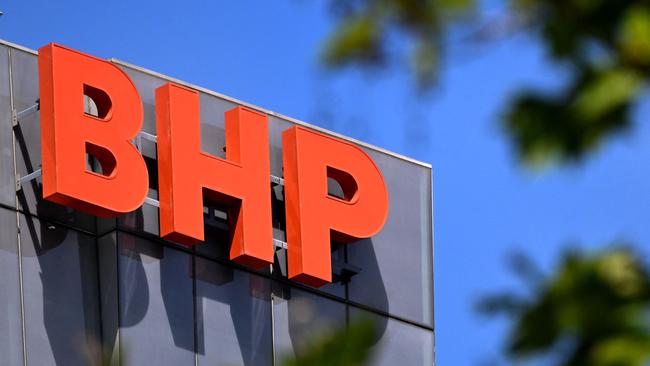BHP has become the ultimate thematic investor
In paying a hefty outlay today for the benefit of tomorrow’s investors, BHP’s Mike Henry is trying to rewire how markets think.

Business
Don't miss out on the headlines from Business. Followed categories will be added to My News.
Just as lithium is starting to give a number of miners serious financial heartburn, BHP is doubling down on something less racy.
Chief executive Mike Henry’s mega-bet on potash shows that he reckons this key crop ingredient will be just as important for future growth as electric vehicles.
Even before a single tonne of potash has been dug and shipped from the new Jansen project in Saskatchewan, Canada, BHP has upped its spending to $US15.1bn ($23.9bn) after the miner’s board this week signed off on the expansion of phase two of the project.
BHP had already committed $US10.2bn to Jansen phase one – a mine not scheduled to start producing until late 2026. And to show the miner’s expectation of the upside, BHP has effectively given the green light for an expansion to double production, with Jansen yet to deliver a dollar of revenue.

It’s an ultra-long term play to be sure, with BHP’s shareholders paying a hefty outlay today for the benefit of tomorrow’s investors. This is a tough call in a market that is obsessed with quarterly returns and has in recent years relied on BHP as a cash machine.
By the time Jansen and its second phase is fully operational early next decade, the mine will be one of the largest potash producers in the world. And the geopolitics can’t be ignored. The countries outside Canada that dominate potash production are Russia and Belarus.
“We think and plan in decades,” Henry says, when it comes to making investments.
The move is part of deliberate efforts by Henry to set BHP for commodities that are highly leveraged to three key themes. Energy transition, population growth and urbanisation.
Henry says potash plays into themes. It is vital for food security and more sustainable farming to support a growing population.

And means chasing acquisitions in copper and nickel used in electrification, while driving greenfield expansions on potash and brownfield on iron ore. And by getting out of industrial commodities such as oil and lower-grade metallurgical coal, Henry has arguably delivered the biggest reshaping of BHP since the Billiton merger.
To pursue this historic shift, Henry will need to use more of the cash sitting on BHP’s balance sheet to spend on developing new projects.
Indeed, this is at least $US10bn a year for each of the next three years, earmarked to be spent on building out “future-facing commodities” and investing in BHP’s own efforts to turn green. This spending is a large step up from recent years when capex, excluding petroleum has been anchored around $US6bn.
Spending on projects include Jansen stage one already underway and Oz Minerals’ West Musgrave copper and nickel deposit in Western Australia. Jansen stage two had already been factored into the capital plans, while BHP is also studying the expansion of copper in South Australia – which is why the miner chose to hold its annual meeting in Adelaide on Wednesday.
Canadian pride
While potash is a new commodity for BHP, it has long been on the miner’s strategic radar.
Former chief executive Marius Kloppers made an audacious $US39bn bid for Canadian producer Potash Corp more than a decade ago. Although that bid was eventually shelved, with the Canadian government opposing the move. And while BHP under Andrew Mackenzie spent more than $US4bn over several year pre-development, the miner was still firmly ambivalent about the project when he left in early 2020. It was Henry who has now committed to tripling the initial outlay.
Potash too is being viewed inside Canada as one of the nation’s biggest emerging strategic industries (much like iron ore with Australia). Having a chief executive and chairman Ken MacKenzie – both Canadians – helps BHP advance the cause.
Potash, a mix of potassium salts, is a crucial ingredient in fertilisers. It plays right into the energy transition given it can be used to replace carbon-intensive nitrogen and phosphates in production and this gives it a greater potential demand for growth.

The extraction has many parallels with iron ore mining. It is relatively scarce in the Earth’s surface, but the Jansen deposit is a single-geography mine, boasting a life span and options for expansion running into the decades. And like iron ore, potash is mined at scale and delivered to ports by rail and this offers the potential for efficiencies right through the production process.
As a contrast, BHP’s Henry has opted to sit out of lithium for the exact reasons it is nothing potash represents. Lithium is relatively common in the Earth’s surface, mines are small and short life and there are limited opportunities for scale.
And this determination to stay on the sidelines of the lithium boom looks to be prudent – although there is a long way for the commodity to evolve.
Meanwhile, fertiliser and potash prices are soaring (although they are down from a peak last April) as the world scrambles to boost crop production following the breakout of war between Russia and Ukraine.
Just as BHP is spending up big on potash, global lithium prices are being badly squeezed on concern about faltering Chinese demand for the material.
This week two of China’s biggest producers – Ganfeng Lithium and Tianqi Lithium – saw their shares collapse on the Hong Kong Stock Exchange as both issued a dire outlook in separate earning updates.
The world is still facing a supply deficit of lithium, although analysts expect markets to move in balance as a wave of production comes on stream in coming years. And if the thematics are right, none of that will be Henry’s problem.
johnstone@theaustralian.com.au
More Coverage
Originally published as BHP has become the ultimate thematic investor





